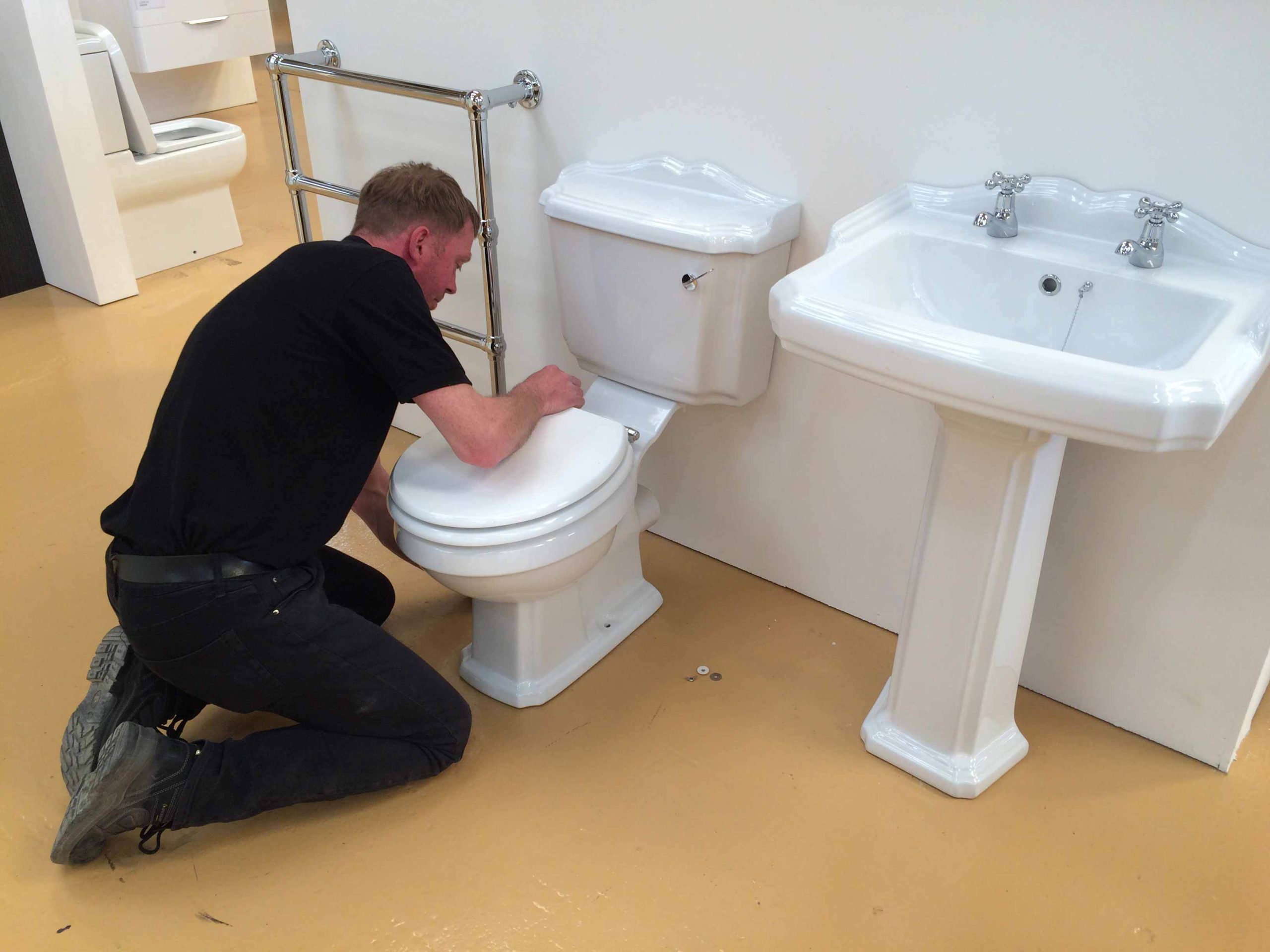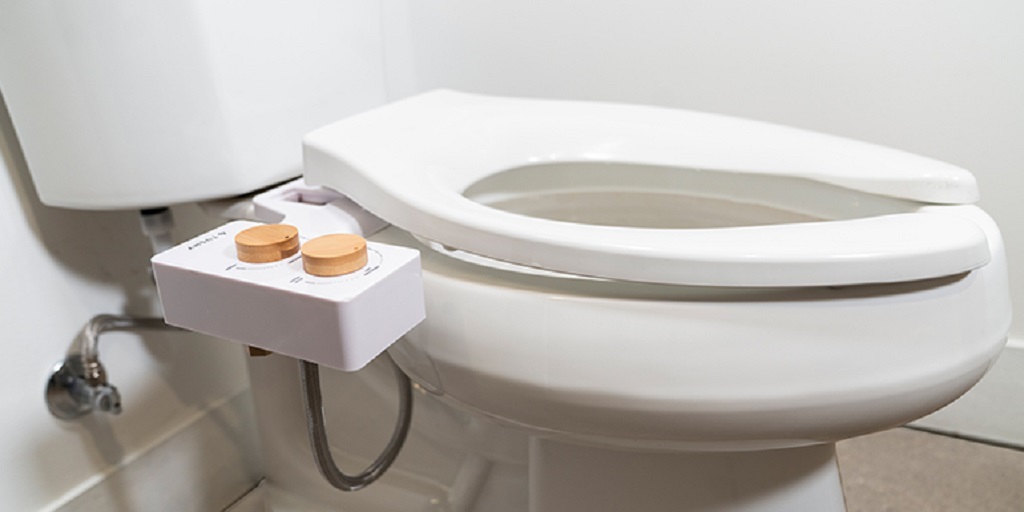To tighten a toilet seat, locate the bolts under it and use a screwdriver to draw them. Pulling a loose toilet seat is a simple task that can be completed in just a few minutes.
A loose toilet seat is inconvenient and can lead to further damage if not addressed promptly. Following a few easy steps, you can have your toilet seat securely fastened and stable again. This article will guide you through tightening a toilet seat, providing the necessary information and tools to complete the task quickly. Ensuring your toilet seat is tightly secured not only improves the comfort and functionality of your bathroom but also prevents the potential for accidents and further wear. With the right approach, you can easily maintain the condition of your toilet seat, enhancing your bathroom’s overall safety and usability. For more helpful tips and detailed guides on home improvement tasks, make sure to visit Beebuze, where you’ll find a wealth of resources designed to assist you in keeping your home in top condition.
Keep reading to learn how to tighten your toilet seat and ensure a comfortable and secure bathroom experience.
Why Tighten Your Toilet Seat
For several reasons, it’s crucial to ensure that your toilet seat is securely tightened. From preventing wobbling and loose seats to avoiding cracks and breakage, having a tight toilet seat is essential for safety and comfort. This is particularly important if you’re dealing with issues like paint coming off the toilet seat, as a securely fastened seat can minimize further damage and wear. Ensuring your toilet seat is properly tightened not only enhances the durability of the seat but also contributes to a more comfortable and secure bathroom experience. Taking the time to check and adjust the tightness of your toilet seat can prevent many common toilet seat problems, maintaining the integrity and appearance of your bathroom setup.
Preventing Wobbling And Loose Seat
Wobbling and a loose seat can lead to potential accidents and discomfort during use. Keeping the toilet seat firmly tightened ensures a stable and secure seat, preventing the risk of slipping or shifting while in use.
Avoiding Cracks And Breakage
When a toilet seat is not tightened correctly, it is more prone to cracks and breakage. This can lead not only to potential injury from a broken seat but also to unnecessary replacement costs. Tightening the seat prolongs its lifespan and ensures its durability for long-term use.
Tools And Materials Needed
You will need a few essential tools and materials to tighten a toilet seat properly. Before starting the process, gathering the items required to make the task as seamless as possible is crucial. Here are the vital tools and materials needed for tightening a toilet seat:
Adjustable Wrench
An adjustable wrench is a versatile tool that will come in handy when tightening the bolts of the toilet seat. Its adjustable nature allows for easy tightening of different sizes of bolts, ensuring a snug fit for the seat.
Screwdriver
A screwdriver is essential for accessing and tightening the screws or bolts that secure the toilet seat in place. The appropriate type and size of screwdriver is necessary to ensure a proper fit and effective tightening.
Rubber Gloves
Wearing rubber gloves is essential to maintaining hygiene and protecting your hands from dirt or grime associated with the toilet seat. These gloves will also provide a better grip when handling the tools, enhancing the overall safety of the tightening process.
Checking The Seat Attachment Type
To tighten a toilet seat, start by checking the seat attachment type. This will help determine the correct method to secure the seat and prevent it from becoming loose over time.
Determining If It’s Bolts Or Hinges
Your toilet seat feeling loose and wobbly can be quite a nuisance. The first step to tightening it is to check the attachment type of the seat. Is it held in place by bolts or hinges? Determining this will help you understand the right approach to fix the problem. Let’s explore how to identify the attachment type and proceed towards a firm and secure toilet seat.
Identifying The Type Of Bolts/hinges
If bolts secure your toilet seat, start by placing a hand on the seat and gently lifting it. Look for the bolts connecting it to the toilet bowl underneath the seat. These bolts are typically located near the hinges at the back of the chair. Please take note of the bolt type, as it may vary depending on the make and model of your toilet.
If your seat uses hinges to attach, the process is slightly different. Examine the area where the seat connects to the toilet bowl. You should see hinges on either side of the seat. These hinges allow the seat to rotate up and down. Identifying the type of hinges will help you understand the attachment mechanism and proceed accordingly.
Tightening A Bolted Toilet Seat
To tighten a bolted toilet seat, start by locating the bolts securing the seat to the toilet. Use a screwdriver or wrench to tighten the bolts, ensuring the seat is firmly attached. Regularly check for any looseness and retighten to maintain a stable and secure toilet seat.
Lifting The Seat
To tighten a bolted toilet seat, the first step is lifting the seat. This can be done by applying gentle pressure and pulling it upwards. It’s essential to be cautious while doing this to avoid any unnecessary damage to the seat or the toilet itself.
Tightening The Bolts
Once the seat is lifted, the next step is locating the bolts holding the seat. These bolts are usually found at the back of the toilet bowl. Tighten the bolts by turning them clockwise using a wrench or pliers. Ensure that you don’t overtighten the bolts, as this can lead to cracking or damaging the seat.
Repositioning The Seat
After tightening the bolts, reposition the seat to check if it is securely fastened to the toilet. Make sure that it is level and aligned correctly with the toilet bowl. Adjust the position by slightly loosening the bolts and repositioning the seat accordingly if needed. Once you are satisfied with the position, tighten the bolts again. Remember, a loose toilet seat can be annoying and unhygienic. By following these simple steps, you can ensure that your bolted toilet seat is tightened securely and stays in place.
Securing A Hinged Toilet Seat
Start by locating the bolts underneath the seat to tighten a hinged toilet seat. Use a screwdriver to draw them clockwise, ensuring a snug fit. Check for any movement and retighten if necessary. Regularly checking and tightening the seat helps prevent unnecessary wobbling and provides a secure and stable toilet seat.
Lifting The Seat
To tighten a hinged toilet seat, lift the seat and inspect the hinges. The hinges are located at the back of the toilet bowl and are responsible for holding the seat. Look for any visible screws or bolts that may be loose or need tightening.
In some cases, the screws or bolts may be covered by small caps. These caps can be easily removed by applying gentle pressure or carefully prying them off with a flathead screwdriver. Once removed, you’ll have access to the screws or bolts that secure the hinges.
Tightening The Hinges
With the seat lifted and access to the hinges, it’s time to tighten them. Grab a screwdriver or wrench that fits the screws or bolts, and turn them clockwise to draw them. Aim to apply enough pressure to securely fasten the hinges, but be careful not to overtighten and risk damaging the seat or the toilet bowl.
If you’re unsure of the type of tool needed for the specific screws or bolts, check the manufacturer’s instructions for guidance. Different toilet seat models may require other tools for tightening the hinges, so choosing the right one is essential to avoid causing any damage.
Testing The Stability
Once the hinges are tightened, it’s crucial to test the stability of the hinged toilet seat. Lower the seat and press down on both sides to ensure it feels secure and stable. If there is any wobbling or movement, return to the previous step and give the screws or bolts another round of tightening.
Also, check for visible gaps between the seat and the toilet bowl. If there are gaps, it may indicate that the seat is not correctly aligned or the hinges are still loose. Adjust the seat as necessary, ensuring it sits evenly on the bowl, and tighten the hinges until the gaps are eliminated.
In conclusion, securing a hinged toilet seat involves lifting the seat, tightening the hinges using the right tool, and testing the stability by checking for wobbling or gaps. Properly tightening a hinged toilet seat will ensure a stable and comfortable experience for every use.
Frequently Asked Questions Of How To Tighten A Toilet Seat
How Can I Tighten A Loose Toilet Seat?
Start by locating the mounting bolts underneath the seat to tighten a loose toilet seat. Use a screwdriver to tighten the bolts, making sure not to overtighten. You can purchase replacements at a hardware store if the bolts are stripped or missing.
Regular maintenance and periodic tightening will help keep your toilet seat secure.
What Tools Do I Need To Tighten A Toilet Seat?
To tighten a toilet seat, you’ll need a screwdriver, preferably a flathead or crosshead, depending on the type of screw used to secure the seat. Additionally, having a pair of pliers or an adjustable wrench may be helpful if the mounting bolts require extra tightening.
Please choose the right tools to avoid damaging the seat or toilet.
How Often Should I Tighten My Toilet Seat?
To ensure a stable and secure toilet seat, it’s a good idea to check and tighten the seat every few months. Regular use and shifting can sometimes cause the seat to loosen over time. By studying and drawing it periodically, you can prevent any unexpected accidents or discomfort while using the toilet.
Conclusion
To conclude, tightening a toilet seat is a simple task that anyone can easily do. By following the step-by-step guide in this blog post, you can ensure a secure and comfortable seat for your bathroom.
With these tips, your toilet seat will be firmly in place, giving you peace of mind and a pleasant bathroom experience.




/tightening-a-loose-toilet-seat-2719023-hero-31a7b0bbe0434ea281b2e77bb1aa4e1a.jpg)


